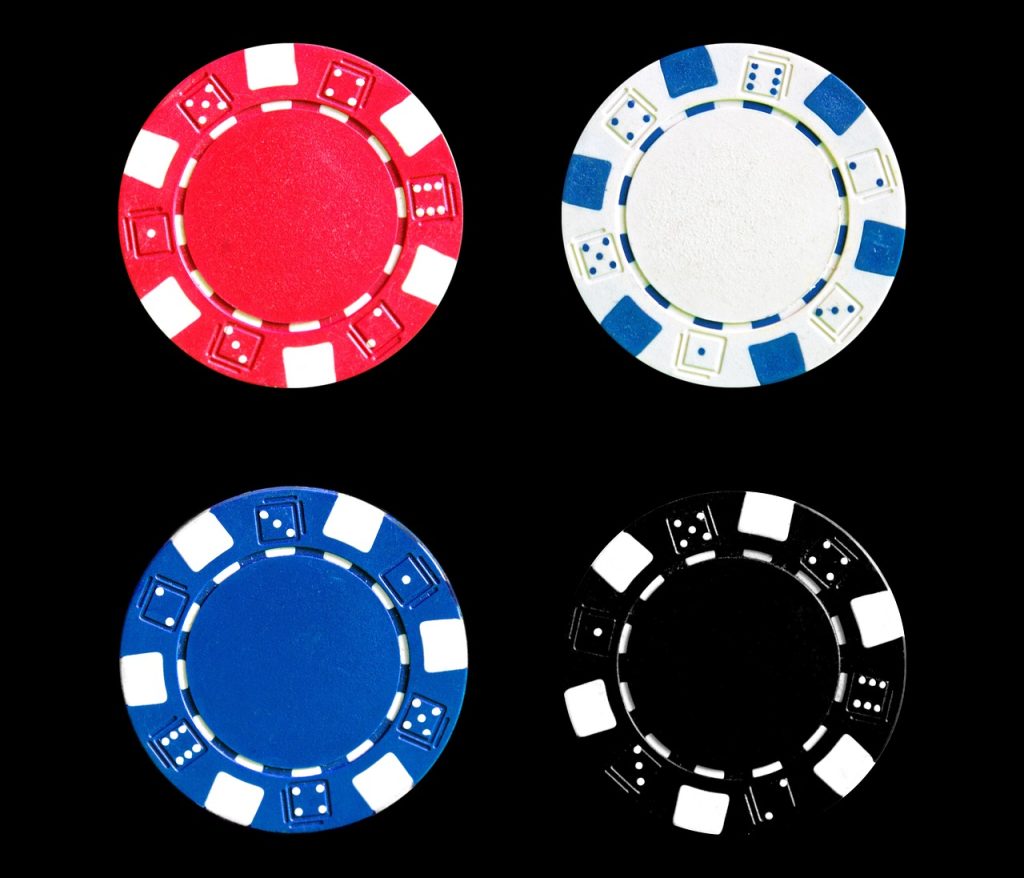Introduction
Poker is a game of skill, strategy, and psychological warfare, where advanced players constantly seek to refine their techniques and outsmart their opponents. In this article, we delve into the realm of fine-tuning poker skills for those looking to elevate their game to the next level. From mastering advanced strategies to sharpening reading abilities at the table, this guide will provide invaluable insights and tips to help advanced players navigate the complexities of high-level poker play. Whether you’re aiming to enhance your bluffing prowess, optimize value in poker hands, or strengthen your mental game, the following sections will equip you with the knowledge and tools necessary to excel in the competitive world of poker.
# Fine-Tuning Your Poker Skills: Tips for Advanced Players
### 1. Mastering Advanced Poker Strategies
#### 1.1 Exploitative vs. GTO Strategies
When it comes to advanced poker strategies, the debate between exploitative and GTO (Game Theory Optimal) strategies is hotter than a freshly dealt hand. Are you going all-in on exploiting your opponents’ weaknesses or playing it cool with a mathematically sound GTO approach? It’s like choosing between a spicy bluff and a calculated call – the choice is yours.
#### 1.2 Advanced Positional Play
In the game of poker, position is power, and advanced positional play is your key to unlocking success at the table. Whether you’re sitting in the early, middle, or late position, understanding how to leverage your position to your advantage can be the difference between a royal flush and a busted straight.
#### 1.3 Adjusting to Different Player Types
Just like a good poker face, being able to adjust your strategy to different player types is essential for any advanced player. Are you up against a tight-aggressive shark or a loose cannon fish? Knowing how to read your opponents and adapt your game accordingly is the ultimate skill in the poker playbook.
### 2. Enhancing Your Reading Skills at the Table
#### 2.1 Recognizing Betting Patterns
When your opponent bets big, do they have the nuts or are they just bluffing? Recognizing betting patterns is like deciphering a secret code at the poker table. From sizing up bets to spotting patterns in aggression, honing your reading skills can turn you into a poker Sherlock Holmes.
#### 2.2 Understanding Non-Verbal Cues
Forget about poker faces – it’s all about non-verbal cues at the table. From a subtle twitch to a nervous tick, players can unintentionally reveal more than their cards ever could. Mastering the art of reading non-verbal signals is like having X-ray vision in a game where every twitch matters.
#### 2.3 Analyzing Hand Ranges
In the world of poker, it’s not just about the cards you hold – it’s about the cards you could hold. Understanding hand ranges is like having a crystal ball that predicts your opponent’s next move. By analyzing potential hands based on betting, position, and past behavior, you can stay one step ahead in the game.
### 3. Advanced Bluffing Techniques
#### 3.1 Semi-Bluffing in Advanced Situations
Semi-bluffing is like a perfectly timed joke – it’s not just about the punchline; it’s about the delivery. Mastering the art of semi-bluffing in advanced situations can keep your opponents on their toes, unsure if you’re holding the nuts or just a well-played bluff. It’s all about keeping them guessing.
#### 3.2 Bluffing Frequency and Balance
Bluffing is a delicate dance in the world of poker, and finding the right balance is key to success. Are you bluffing too often and becoming predictable? Or are you too tight and missing out on valuable opportunities? Understanding bluffing frequency and balance is like finding the sweet spot between a stone-cold bluff and a winning hand.
#### 3.3 Spotting Bluff Opportunities
In poker, spotting a bluff opportunity is like finding a hidden treasure chest at the table. From detecting inconsistencies in betting patterns to sensing weakness in your opponent’s demeanor, being able to spot a bluff opportunity can turn the tide in your favor. It’s like having a sixth sense that lets you see through the smoke and mirrors.
### 4. Maximizing Value in Poker Hands
#### 4.1 Extracting Value from Strong Hands
When you’ve got a strong hand in poker, it’s like holding a winning lottery ticket – the trick is to cash it in for maximum value. From sizing up bets to luring opponents into a trap, mastering the art of extracting value from strong hands can turn a good hand into a jackpot.
#### 4.2 Value Betting vs. Trapping
To bet for value or to trap your opponents – that is the question. Understanding when to go for value betting and when to set a trap is like playing a high-stakes chess match at the poker table. It’s all about knowing your opponent, reading the situation, and making the strategic move that brings in the biggest payout.
#### 4.3 Recognizing Value in Marginal Situations
In poker, not every hand is a royal flush, but even in marginal situations, there’s value to be found. Whether you’re on the edge of a fold or a call, recognizing value in these close-call moments can separate the amateurs from the pros. It’s like finding a diamond in the rough – the real skill lies in knowing when to hold ’em and when to fold ’em.# 5. Understanding Advanced Odds and Probabilities
## 5.1 Calculating Pot Odds and Equity
Mastering pot odds and equity can elevate your game from good to great. Pot odds help you determine if the potential payout justifies the risk, while equity assesses your chances of winning the hand. Understanding and calculating these numbers can give you a significant edge at the poker table.
## 5.2 Applying Implied Odds in Complex Scenarios
Implied odds go beyond just the current pot size and factor in potential future bets based on how you expect your opponents to play. In more intricate situations, considering implied odds can lead to more profitable decisions, especially in games where players are willing to put in more chips after the flop.
## 5.3 Incorporating Fold Equity into Decision Making
Fold equity refers to the probability that your opponent will fold to your bet. By factoring in fold equity alongside pot odds and hand equity, you can bluff more effectively and make profitable plays even when you don’t have the best hand. Utilizing fold equity strategically can keep your opponents guessing and increase your overall success rate.
# 6. Developing a Strong Mental Game
## 6.1 Managing Tilt and Emotional Swings
Tilt is a poker player’s worst enemy, leading to irrational decisions and costly mistakes. Learning how to recognize and control tilt, as well as managing emotional swings after wins and losses, is crucial for maintaining a clear head and making optimal choices at the table.
## 6.2 Maintaining Focus and Concentration
Staying focused during long sessions or in high-pressure moments is essential for peak performance. Avoid distractions, stay in the present moment, and practice mental exercises to enhance your concentration skills. A sharp mind leads to better decision-making and a more successful poker career.
## 6.3 Building Confidence and Resilience
Confidence is key in poker, but it must be balanced with humility and adaptability. Building resilience to handle setbacks and learning from losses can strengthen your overall mindset. Cultivate a positive outlook, trust your skills, and believe in your ability to overcome challenges on the poker table.
# 7. Advanced Bankroll Management Strategies
## 7.1 Risk Management in High-Stakes Games
In high-stakes poker, proper risk management is crucial to protect your bankroll from significant losses. Understanding variance, setting stop-loss limits, and being disciplined with your bankroll allocation can help you navigate the ups and downs of playing at higher stakes.
## 7.2 Balancing Aggression with Responsible Bankroll Management
While aggression is a valuable trait in poker, it must be tempered with responsible bankroll management. Avoiding unnecessary risks, knowing when to dial up the aggression, and staying within your financial comfort zone are key elements of striking the right balance between aggression and prudent play.
## 7.3 Setting Goals and Limits for Long-Term Success
Establishing clear goals for your poker journey and setting limits on your play can help you stay on track for long-term success. Whether aiming to move up in stakes, improve your win rate, or achieve a specific financial target, having a roadmap and boundaries in place can guide your decisions and propel your poker career forward.
Closing Thoughts
As you continue to hone your poker skills and embrace the challenges of advanced gameplay, remember that mastery is a journey of constant learning and adaptation. By integrating the strategies and techniques outlined in this guide into your playing repertoire, you are positioning yourself for success at the highest levels of the game. Stay disciplined, stay focused, and above all, enjoy the thrill of the game as you strive to become a formidable force at the poker table. Good luck, and may the cards always fall in your favor.







Facebook Comments